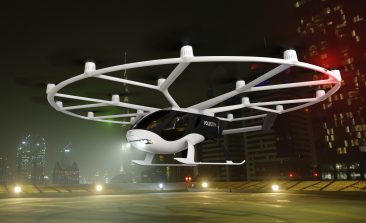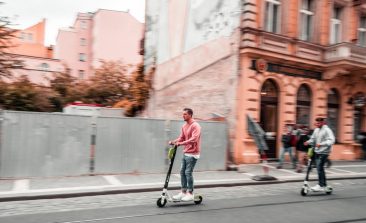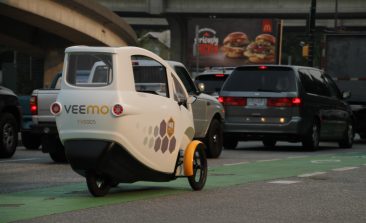Content to: RESET Special e-mobility
Air Taxis: The (Un)Sustainable Future of Travel for the World’s Elite?
Traffic jams and congested roads are a big problem in almost every large city in the world. Could flying taxis offer a solution? Unlikely. They're not much more than the futuristic dream of a rich elite.
Electric Scooters In Berlin: How Eco-Friendly Are They Really?
As their popularity spreads throughout Europe, Germany has become the latest country to introduce electric scooters to its roads. Could they help solve traffic problems and make our cities cleaner and less polluted? What is their real environmental impact?
An Electric Car With an Ethical Battery? Circulor Wants to Make It Possible
While electric vehicles are thought to be the answer to a future of green, clean mobility, questions have been raised about the sustainability of the batteries that power them. Could blockchain hold the key?
Solmove Set to Open First Solar Cycle Path
A road surface that generates electricity from sunlight, absorbs noise, breaks down nitrogen oxides, defrosts ice in winter, provides valuable data and supplies electric vehicles with electricity. Sound too good to be true? It's true, and it's here.
SunCycles: Solar-Powered E-Bikes for Namibia
SunCycles is supplying Namibia with the latest in sustainable transportation - the country's first ever fleet of solar-powered e-bikes.
Meet Noah, the World’s First Recyclable Car
Powered by electricity, completely recyclable and made from renewable materials - does this sound like a car to you? Absolutely. Say hello to "Noah".
In Shanghai Now You Can Do Karaoke While You Wait for Your EV to Charge
How about doing a bit of karaoke while your EV tanks up? In Shanghai, now you can. Could the sing-while-you-wait concept give e-mobility a boost in Europe too?
Veemo: the Pedal-Powered Velomobil That Thinks It’s a Car
What if you could combine the versatility of a bike with the functionality of a car? Say hello to the Veemo.
BMW’s E-Bike Concept Wants to Rise Above Congestion. Literally.
BMW's Vision E3 Way concept proposes an 'elevated, electric and efficient' solution to urban congestion and cyclist safety.








